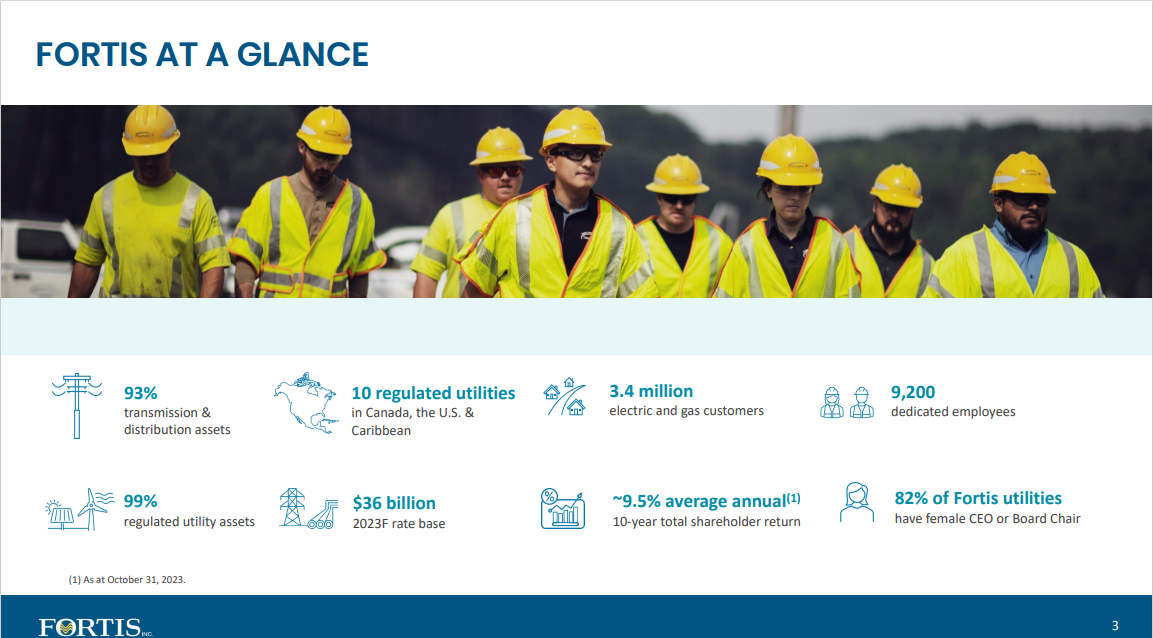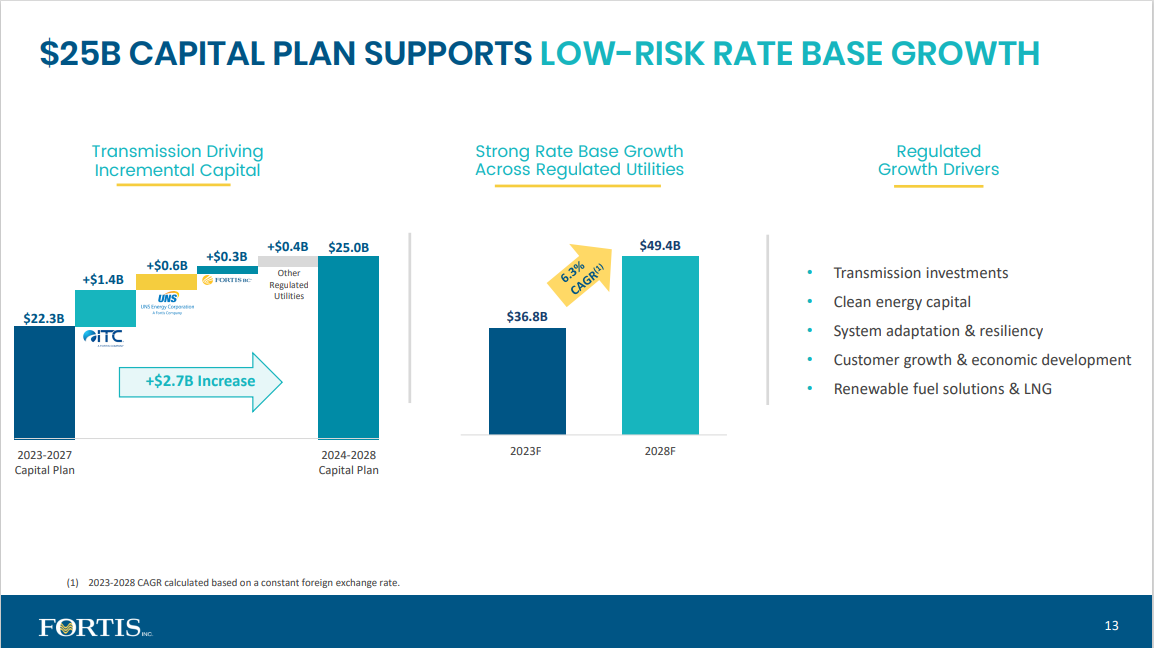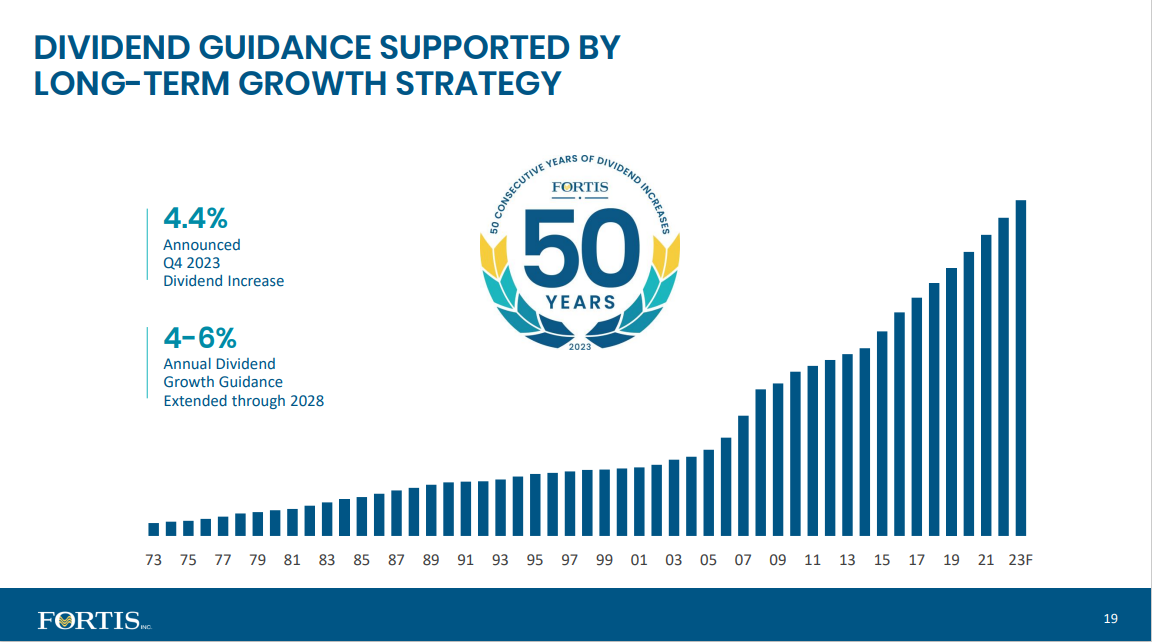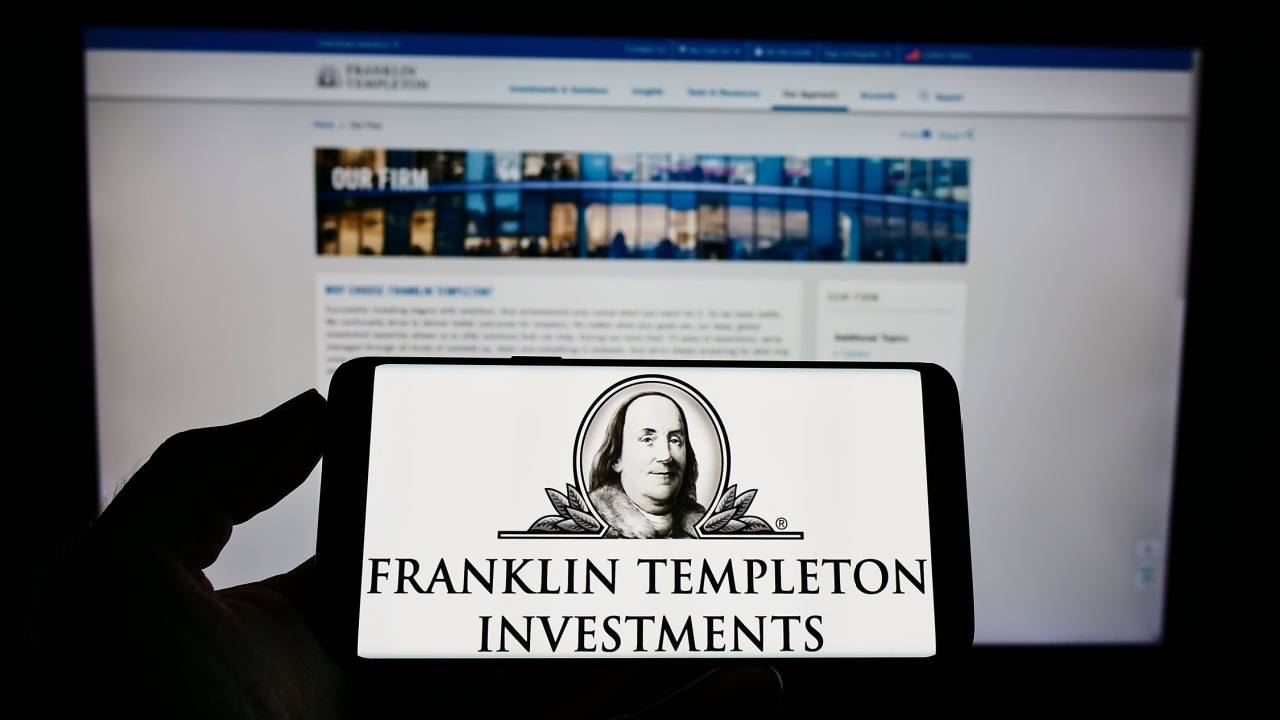Published by Bob Ciura on November 14th, 2023
The Dividend Kings are an illustrious group of companies. These companies stand apart from the vast majority of the market as they have raised dividends for at least 50 consecutive years.
We believe that investors should view the Dividend Kings as the most high-quality dividend growth stocks to buy for the long term.
With this in mind, we created a full list of all the Dividend Kings. You can download the full list, along with important financial metrics such as dividend yields and price-to-earnings ratios, by clicking the link below:
This group is so exclusive that there are just 53 companies that qualify as a Dividend King. Fortis Inc. (FTS) recently increased its dividend for the 50th consecutive year, joining the list of Dividend Kings.
This article will discuss the company’s business overview, growth prospects, competitive advantages, and expected returns.
Business Overview
Fortis is Canada’s largest investor-owned utility business with operations in Canada, the United States, and the Caribbean. It is cross-listed in Toronto and New York. Fortis trades with a current after-tax yield of 3.7% (about 4.3% before the 15% withholding tax applied by the Canadian government). Unless otherwise noted, US$ is used in this research report.
At the end of 2022, Fortis had 99% regulated assets: 82% regulated electric and 17% regulated gas. As well, 64% were in the U.S., 33% in Canada, and 3% in the Caribbean.

Source: Investor Presentation
Fortis reported Q3 2023 results on 10/27/23. For the quarter, it reported adjusted net earnings of CAD$411 million, up 20.5% versus Q3 2022, while adjusted earnings-per-share (EPS) rose 18.3% to CAD$0.84. The company noted that the increase reflected “the new cost of capital parameters approved for the FortisBC utilities in September 2023 retroactive to January 1 2023.”
It also benefited from higher retail revenue in Arizona due to warmer weather and new customer rates at Tucson Electric Power, effective September 1, 2023, as well as rate base growth across its utilities. “A higher U.S.-to-Canadian dollar foreign exchange rate and higher earnings at Aitken Creek, reflecting market conditions, also favorably impacted earnings.” Notably, Fortis raised its quarterly dividend by 4.4% to CAD$0.59 per share in September.
The year-to-date (YTD) results provide a bigger picture. In this period, the adjusted net earnings climbed 17.3% to CAD$1,152 million, while adjusted EPS rose 15% to CAD$2.37. The company’s YTD capital investments were CAD$3.0 billion, and it’s on track to make C$4.3 billion of capital investments this year. We raise our 2023 EPS estimate to $2.22.
Growth Prospects
Utility companies are typically classified as slow, but steady growers. Indeed, we expect Fortis to grow its earnings-per-share by 5.5% annually over the next five years. This growth will be driven by multiple factors.
After releasing its five-year capital plan of CAD$25 billion for 2024 to 2028, which suggests a mid-year rate base growth at a compound annual growth rate of ~6.3% from C$36.8 billion in 2023 to C$49.4 billion in 2027, the company also maintained its dividend growth guidance of 4-6% through 2028.

Source: Investor Presentation
The capital plan includes investing in areas, such as a greener and improved grid and a shift from fossil fuel to solar and wind generation. Importantly, this growth rate is before the impact of acquisitions, which have historically been
important for Fortis.
Competitive Advantages & Recession Performance
Utility companies often benefit from multiple advantages. The first is that they usually operate in a near-monopoly on the areas that they service.
Because demand for Fortis’s utility services doesn’t change much in various economic environments, Fortis’s results have been quite resilient through economic uncertainties, including the one we’re experiencing in which inflation and interest rates are higher than recent history.
In addition, Fortis is unique because of its cross-border exposure. Its timely U.S. acquisitions of regulated utilities since 2013 have allowed Fortis to now generate more than half of its revenue from that country.
Given these built-in advantages, many utilities often outperform other sectors of the market during recessions. Below are the company’s earnings-per-share results during, and after, the Great Recession:
- 2007 earnings-per-share: $1.32
- 2008 earnings-per-share: $1.52 (15% increase)
- 2009 earnings-per-share: $1.51 (~1% decrease)
- 2010 earnings-per-share: $1.81 (20% increase)
The company grew its diluted earnings-per-share in 2008, followed by just a minor decline in 2009, which was the worst of the recession. Fortis then quickly rebounded with 20% earnings growth in 2010.
Valuation & Expected Total Returns
We expect Fortis to generate earnings-per-share of US$2.22 for 2023. At the current share price, FTS stock trades for a price-to-earnings ratio of 18.5.
Given the company’s stable business model, we believe fair value is 19 times earnings, which is close to the average valuation of the stock for the last five years. Reverting to our target valuation by 2028 would result in a multiple expansion, boosting annual returns by 0.5%. In addition, we expect annual EPS growth of 5.5% which will also contribute to shareholder returns.
Finally, dividends will boost returns as FTS stock currently yields 4.1%.

Source: Investor Presentation
FTS has now increased its dividend for 50 consecutive years. Fortis’ payout ratio has traditionally been about 70% of earnings. The dividend is important to management, and we believe it is safe and should continue to rise for years to come.
Therefore, FTS is expected to return 10.1% annually through 2028. An expected return above 10% qualifies FTS stock as a buy.
Final Thoughts
There is much to like about Fortis, such as its recession-proof business model, the high success of rate increase approvals, and the long history of dividend growth. Only the most well-run businesses can pay dividends for as long as Fortis has.
Shares of Fortis appear reasonably valued. The company should continue to grow earnings, and consequently its dividends, for many years. With an expected return above 10%, the stock is a buy.
The following articles contain stocks with very long dividend or corporate histories, ripe for selection for dividend growth investors:
Thanks for reading this article. Please send any feedback, corrections, or questions to [email protected].














